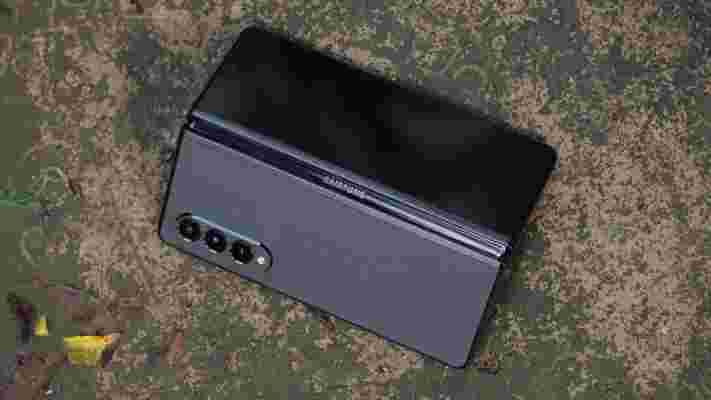
Samsung Galaxy Z Fold 3 vs Samsung Galaxy Z Flip 3: how deep are your pockets?
by
Tomasz David
Samsung really aced it with its latest foldable phones, the Samsung Galaxy Z Fold 3 and the Samsung Galaxy Z Flip 3 . They’re two of the best foldable phones we’ve ever seen, and they’re certainly the most popular.
But which Galaxy Z phone is the better buy? Is a straight comparison even valid, or are they completely different phones with completely different use-case scenarios?
Having spent quality time with both foldable flagships, that’s what we’re here to find out. Let’s break down where these bendy phones differ, where they’re similar, and which is the best for you.
Samsung Galaxy Z Fold 3 vs Samsung Galaxy Z Flip 3: price and availability
Both of these phones arrived in UK and US shops on August 27, 2021. The Samsung Galaxy Z Fold 3 is by far the more expensive of the two, with prices starting from $1,799 / £1,599 / AU$2,499 for the 256GB model. If you want more storage, $1,899 / £1,699 / AU$2,649 will get you 512GB.
Pricing for the Samsung Galaxy Z Flip 3 starts from $999 / £949 / AU$1,499 for 128GB, while the 256GB model costs $1,049 / £999 / AU$1,599. This makes it the first truly accessible (though hardly cheap) foldable phone that Samsung has made.
As you can see, while these Samsung foldables are of the same broad class and vintage, there’s a huge difference in pricing. Before you even consider their relative merits, it’s worth considering your budget.

Design
While both of these Galaxy Z foldables get the ‘Galaxy Z 3’ moniker, only the Samsung Galaxy Z Fold 3 is a genuine third-generation device. There was no Galaxy Z Flip 2, just a Galaxy Z Flip and an incrementally improved Galaxy Z Flip 5G.
Still, Samsung has taken what it’s learned from across the Galaxy Z range and produced two remarkably solid foldable phones. Both have very solid and smooth hinge mechanisms and IPX8 ratings, meaning they’re the first Samsung foldables to be properly water resistant.
Both phones use premium materials, with Gorilla Glass Victus to the exterior, tough plastic to the inner screens (that’s the price of a foldable screen), and tough aluminum frames.
Aside from the obvious fact that both phones fold in half, that’s about where the design similarities end. The Samsung Galaxy Z Fold 3 is essentially a tablet that folds down into a full-sized phone, while the Samsung Galaxy Z Flip 3 is a full-sized phone that folds down into a compact pager of sorts.
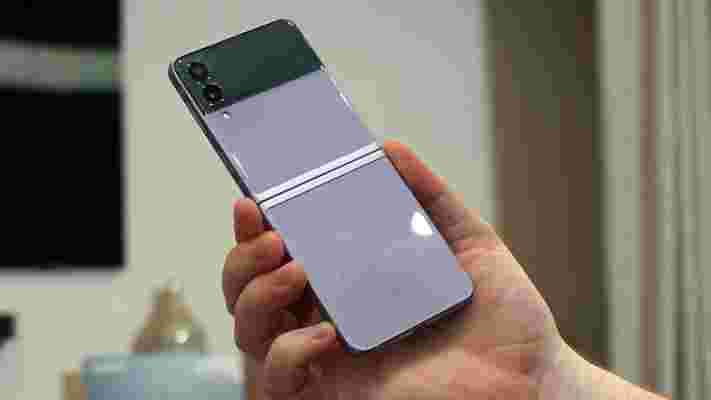
To that end, the Z Fold 3 dwarfs the Z Flip 3. The larger phone is a massive (and rather square) 158.2 x 128.1 x 6.4mm when unfurled, while the smaller phone is a more traditional (but still very skinny) 166 x 72.2 x 6.9mm.
If that doesn’t paint a picture for you, consider how much both phones weigh. The Samsung Galaxy Z Fold 3 is downright cumbersome at 271g, while the Samsung Galaxy Z Flip 3 weighs about as much as your average non-foldable phone at 183g.
The difference is as stark as this: the Samsung Galaxy Z Flip 3 is arguably the most pocketable flagship phone on the market, while the Samsung Galaxy Z Fold 3 is arguably the least pocketable.
Another fundamental difference is how the two phones function when closed. Without wishing to step on the toes of the following section, the Galaxy Z Fold 3 works like a normal phone when closed, while the Galaxy Z Flip 3 is only really functional when open.
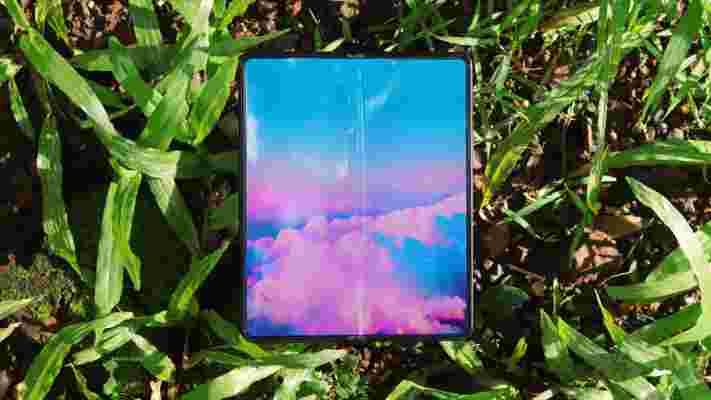
Display
Both phones pack two displays: one large screen that covers almost the entirety of the inside surface, and another smaller display that sits on one external surface.
In the case of the Galaxy Z Fold 3, that external element is a huge 7.6-inch Foldable Dynamic AMOLED 2X display with a 1768 x 2208 resolution. With the Galaxy Z Flip 3, it’s a 6.7-inch Foldable Dynamic AMOLED 2X display with a 1080 x 2640 resolution.
Both screens can hit the heady heights of a 120Hz refresh rate, which makes them super-smooth to operate. Both can hit a peak brightness of 1200 nits, too.
Aside from size, the biggest difference here is one of aspect ratio. While the Galaxy Z Flip 3 folds out to a fairly typical 22:9, the Galaxy Z Fold 3 folds out to an atypical (for phones at least) 22.5:18. This makes the larger display almost square, resulting in a tablet-like canvas.
This is ideal for viewing web content and editing documents, but is perhaps a little sub-optimal for landscape video content. The picture will still be plenty large enough, but you’ll have to put up with large black borders.
In terms of the external displays, it’s the Galaxy Z Flip 3 that’s the weird one here. Its 1.9-inch AMOLED, with its 260 x 512 resolution, is rather weedy, and useful only for showing the time, date, brief notification previews, and a handful of widgets.
Conversely, the Galaxy Z Fold 3’s external display is a 6.2-inch 2268 x 832 Dynamic AMOLED 2X with a 25:9 aspect ratio and a 120Hz refresh rate. In other words, it’s a pretty normal smartphone display, and as such, is useful for all normal smartphone tasks.
Camera
Let’s not beat around the bush here: cameras are not the strong suit of either of Samsung’s latest foldable phones. It’s where the clearest compromises have been made compared to their non-foldable stablemates.
We described the Fold 3’s cameras as “good, but not groundbreaking”, while we said that the Flip 3’s cameras represented “the phone’s biggest shortcoming”. Neither system is bad, per se, but you can do a lot better for the money if you’re willing to forego those flashy foldable designs.
That said, the Galaxy Z Fold 3 camera system is quite clearly the better of the two. It’s a triple–12MP set-up with wide, ultra-wide, and telephoto options, so it covers all of the key bases. The Galaxy Z Flip 3 has a dual–12MP camera set-up with wide and ultra-wide options. There is no telephoto.
What’s more, the Galaxy Z Fold 3’s main sensor is a 1/1.76“ unit, which is larger than the Galaxy Z Flip 3’s 1/2.55” equivalent. This means that it can hoover up more light, which is generally a good thing in mobile photography – especially when those ambient light levels start to drop.
Both cameras are capable of taking bright, punchy shots in most conditions, thanks largely to Samsung’s enthusiastic color science. But they’re nowhere near the level of their non-foldable $1000/£1000 competitors – including the Samsung Galaxy S22 Ultra.
The Fold 3’s camera system does at least offer something slightly interesting in the shape of an under-display selfie camera. But the image quality from this humble 4MP sensor really isn’t up to much. Thankfully there’s a traditional 10MP selfie camera on the outside display, which is better.
Indeed, this seems to be the same 10MP selfie cam that’s on the inside of the Galaxy Z Flip 3.
In both cases, our recommendation would be to use the main camera and the external display as a viewfinder for a level of selfie shot that no ‘normal’ phone can match.
Specs and performance
Both phones pack Snapdragon 888 chipsets, with 12GB of RAM for the Fold 3 and 8GB for the Flip 3.
This distinguishes them from other, non-foldable Samsung flagships, which tend to split their hardware between Qualcomm and home-brewed Exynos silicon. Given that Qualcomm’s chips are invariably better, this is a good thing.
Of course, even the Snapdragon 888 is no longer the fastest Android chip around, having been superseded by the Snapdragon 8 Gen 1. This is somewhat problematic, given that the Samsung Galaxy S22 is now out and powered by the latter chip, but for significantly less money than even the Galaxy Z Flip 3.
Our advice would be to not pay too much attention to this performance difference. The truth is that the Snapdragon 8 Gen 1 doesn’t represent a huge advance, and the Galaxy Z Fold 3 and Flip 3 both continue to handle like a dream.
In terms of storage, the Fold 3 gives you a choice of 256GB or 512GB, while the Flip 3 gives you 128GB or 256GB.
Only the Galaxy Z Fold 3 features S Pen compatibility, though you’ll have to buy one of two specific styluses specifically for the task. You can thank that soft plastic screen for this stipulation.
Once you do buy the S Pen, though, the Galaxy Z Fold 3 turns into a dream phone for artists, note takers, and habitual scribblers.
Battery
The Galaxy Z Fold 3’s battery is pretty small for its size. At a mere 4,400mAh, it falls well short of most flagship phones, which of course only tend to have a single, smaller display to drive.
It’s not the only Samsung foldable to have a slightly poky battery either. The Samsung Galaxy Z Flip 3 runs on a tiny 3,300mAh cell.
This drop in battery size has negative ramifications for the stamina of both phones. With the Galaxy Z Fold 3, we found that liberal use of taxing elements like 5G and the camera would leave us high and dry before the end of a full day of usage. The Galaxy Z Flip 3 was similar.
To be clear, they can both last a day of light to moderate usage, but no more.
In terms of recharging, the Galaxy Z Fold 3 only supports up to 25W wired charging, which isn’t too hot. It’s a lot better than the Galaxy Z Flip 3’s 15W, though, which is extremely slow for a flagship phone.
Neither phone impresses in the wireless charging stakes either. The Fold 3 supports 11W, while the Flip 3 supports a mere 10W.
Takeaway
Besides the obvious similarities, the Samsung Galaxy Z Fold 3 and Flip 3 are two very different phones with very different use cases. This makes this less of a straight comparison piece than it is an exercise in establishing which phone is right for you.
The Galaxy Z Fold 3 is for those looking for a full tablet-like, large-screen experience that can still be lugged around in a pocket. Its square fold-out 7.6-inch display makes it a great canvas for web browsing, document editing, multi-tasking, and other such power-user applications.
On the other hand, the Galaxy Z Flip 3 is ideal for those who want the ultimate portability without sacrificing a ‘normal’ smartphone experience. You’re still getting a strong 6.7-inch display with all the bells and whistles, but it can be folded up into a tiny square when not in use.
We called the Galaxy Z Fold 3 “The best foldable phone so far”, but it’s also very expensive and rather unwieldy. Ultimately, the winner here comes down to the size of your pockets, in both senses of the term.
Video game peripheral designer HORI has a new Sonic-themed Nintendo Switch Pro Controller on the way. But while it might give fans of the blue hedgehog something new to get their hands around, its design is raising a few eyebrows.
First and foremost, the controller (first spotted by Creative Bloq ) is something of an eyesore. In a hodgepodge of blue and white stripes, there’s an image of Sonic mid-run plastered on its righthand side, a Sonic logo stuck on its left grip, a HORI logo down the center, and a dark patch on the right grip. It's finished off with a combination of blue and red buttons and analog sticks. Minimalism was not on the design brief this time around.
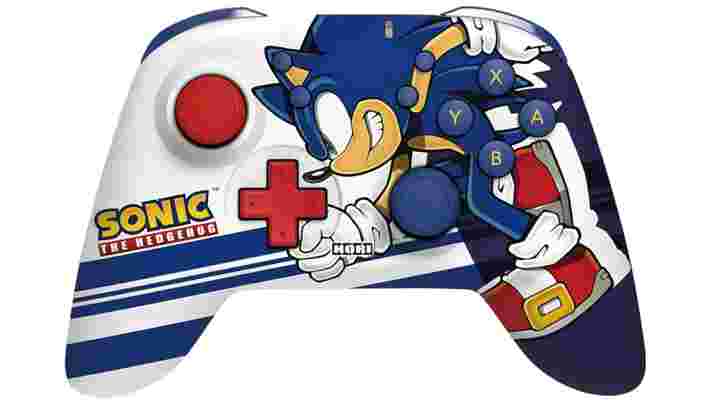
But more striking is the unfortunate placement of the right analog stick in relation to Sonic’s crotch. With his right leg bent upwards protruding from his waist, the stick placed just at its tip, and both parts colored exactly the same shade of blue, your mind is easily drawn to an area of Sonic’s anatomy you’d rather not think about. Although it’s not so obvious at first glance, it’s difficult to unsee the outline of Sonic’s unmentionables once pointed out (sorry).
This isn’t the only officially licensed Nintendo Switch Pro Controller HORI has released. It’s designed similar gamepads featuring Mario , Yoshi , and Princess Peach . There's also a Sonic-themed Split Pad Pro that slots on in place of the Joy Cons alongside the console’s screen. Fortunately, none of those designs include accidental suggestions of their characters’ private areas.
The Sonic Nintendo Switch Pro controller is due to release on June 9 for $59.99 which is around £45.80 / AU$ 82.70. HORI will be shipping internationally. That's only a couple of months after the new Sonic 2 movie will hit cinemas so you won't have to wait long to get your hands on Sonic's hardware.
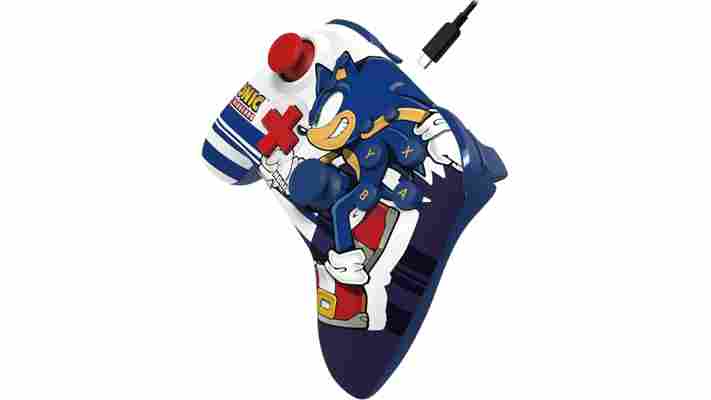
Gears of War developer The Coalition is back with a new Unreal Engine 5 tech demo, giving us a fresh look at what Gears 6 could offer –and it’s rather exciting indeed.
Called ‘ The Cavern ,’ the tech demo builds upon The Coalition’s July ‘ Alpha Point ’ demonstration and uses the same character model we previously saw but inside a different environment.
Lasting for a minute (the footage begins at 0:47), The Cavern demo showcases movie quality assets that feature tens of millions of polygons that can be rendered in real-time. This results in a massive 100x leap forward in graphic detail, according to The Coalition. Featuring incredibly realistic visuals, we find the unnamed character holding a light crystal, as he faces down a fearsome enemy. Swap that crystal for a gun and it wouldn’t look out of place in a Gears sequel.
It certainly looks impressive, but that’s not all. During an interview with Xbox Wire , studio technical director Kate Rayner elaborated on The Coalition’s work with Unreal Engine 5. Advising that’s been ongoing for over a year – something we previously knew thanks to the Alpha Point demo – Rayner confirmed The Cavern was the team’s “first-ever cinematic in UE5.”
Asked about her initial impressions of Epic’s latest engine, Rayner said: “First, it was very exciting to get access, everyone at The Coalition was jumping in. That’s when we began the work to create Alpha Point. The biggest surprise to me was how finished the engine was, and how easy it was to bring UE4 content into UE5 seamlessly.” As for transitioning from Unreal Engine 4 to 5, Rayner calls this process “very smooth,” telling Xbox Wire “it only took us about two weeks to get the team switched over.”
Naturally, the questions didn’t stop there. Asked if there’s anything that made this transition smoother, Rayner explained how the engine’s architecture is “really quite modular, and we have embraced plugins as a structure to extend the functionality and modify the engine to our needs. Plugins being able to contain content – not just code – has been a revelation.” When working with Unreal Engine 4, she confirmed the team would make “a lot of changes to the engine over time, and so those integration costs would get higher.” Now, she calls those integrations much smoother, giving them more flexibility.
A glimpse of what's to come?

Unfortunately, we wouldn’t expect a Gears 6 announcement anytime soon. Gears 5 wrapped up post-launch support last September after two years with Operation 8 Drop 2 , but when asked which Unreal Engine 5 tools their next project uses, Rayner simply states “we’re not ready to talk about our next game.” That’s unsurprising as in the previous update last May, the team advised “shifting to a new engine is a big undertaking, so we want to be clear that we will not be announcing any new projects or titles for some time.”
Previous rumors suggest Gears 6 will launch around 2024 “ at the earliest .” However, that same report also suggested The Coalition’s working on a smaller, brand new IP first, one that’s aiming to release next year. Both remain unconfirmed by Microsoft and The Coalition but either way, we’re confident Gears 6 will eventually happen and if it looks anything like The Cavern, we’ll certainly be content.
Leave a Comment